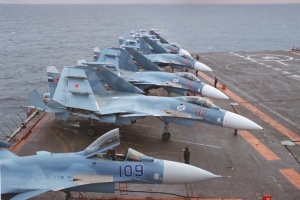Real World Vehicles: Difference between revisions
No edit summary |
No edit summary |
||
| Line 1: | Line 1: | ||
A myriad of '''real world vehicles'' can be seen throughout [[Neon Genesis Evangelion]], [[End of Evangelion]], and [[Rebuild of Evangelion]]. These are usually military vehicles, sometimes civilian, but always drawn and animated with great detail to their features. | A myriad of '''real world vehicles''' can be seen throughout [[Neon Genesis Evangelion]], [[End of Evangelion]], and [[Rebuild of Evangelion]]. These are usually military vehicles, sometimes civilian, but always drawn and animated with great detail to their features. | ||
Evangelion has a special relationship with warships, which go on their own page, although boats and small watercraft will remain on this page. See [[Warships in Evangelion]] for details on the warships of the series. | Evangelion has a special relationship with warships, which go on their own page, although boats and small watercraft will remain on this page. See [[Warships in Evangelion]] for details on the warships of the series. | ||
Revision as of 02:37, 2 March 2011
A myriad of real world vehicles can be seen throughout Neon Genesis Evangelion, End of Evangelion, and Rebuild of Evangelion. These are usually military vehicles, sometimes civilian, but always drawn and animated with great detail to their features.
Evangelion has a special relationship with warships, which go on their own page, although boats and small watercraft will remain on this page. See Warships in Evangelion for details on the warships of the series.
Ground vehicles
Type-74 Nana-yon
The tank most commonly seen in the series, the Type-74[1] is the main battle tank of the JGSDF with 700 deployed as of 2006. It was originally designed durring the 1960s, an era of tank design where it was assumed that HEAT (High-Explosive Anti-Tank) rounds had made most armor obsolete, and as such it has reletively thin armor that made the tank almost completely opsolete before the first production models even rolled off the assmbly line in 1975. It is primarily armed with a Royal Ordnance L7 105 mm rifled gun, sports 120mm of armor, carries a crew of four, can travel at a speed of 53 km/h, and weighs 38 tonnes.
It can be seen in Episode 1, Episode 9, End of Evangelion, Evangelion 1.0, and Evangelion 2.0.
Type-90 Kyū-maru
A tank that shows up briefly in Evangelion 1.0, the Type-90[2] was the JGSDF's replacement for the Type-74 and as of 2010 there are currently 341 on active duty. Being faster (70km/h), more armored, better armed (Rheinmetall 120 mm smoothbore gun with automatic loader), requiring less of a crew (3), and being produced with mostly native built parts the Type-90 is far superior to the Type-74 in almost every way and is slated to be sublemented by the new Type-10[3], making it an obvious choice for inclusion in the Rebuild of Evangelion movies.
It can be seen in Evangelion 1.0 and Evangelion 2.0.
BM-30 Smerch
The BM-30 "Smerch"[4] (tornado) is a Russian-built multiple rocket launcher first designed in the 1980s that is currently used by 13 different countries, and whose Russian designation is 9A52. It is capable of firing 12 300mm missiles and rockets in 38 seconds over a maximum distance of 90km, with a total reload time of twenty minutes. It requires a crew of three, weighs 43.7 tons, and has a maximum speed of 60 km/h.
It can be briefly seen in Evangelion 1.0 during the initial attack on Sachiel.
M-270 MLRS (Multiple Launch Rocket System)
The iconic M270[5], often referred to simply as the MLRS, is an American-made rocket artillery system first delivered to the US Army in 1983 that has since come to be used by 12 different countries, including 99 in use by the JGSDF. It can fire 12 rockets in less then 40 seconds or 2 missiles every ten seconds, and can be reloaded in either 4 minutes (M270) or 3 minutes (M270A1). It requires a crew of three, weighs 27.5 tons, and has a maximum speed of 50 mph (80.5 km/h).
Aircraft
Sukhoi Su-33 Flanker-D
A Russian Navy fighter first introduced in 1994, the Su-33[6] can be seen prominently in Episode 8. This is rather different from the Su-33's real-life production run being limited to 36 aircraft (excluding prototypes).
 |

|
|
Su-33s from Episode #08 compared with real-life Su-33s. | |
